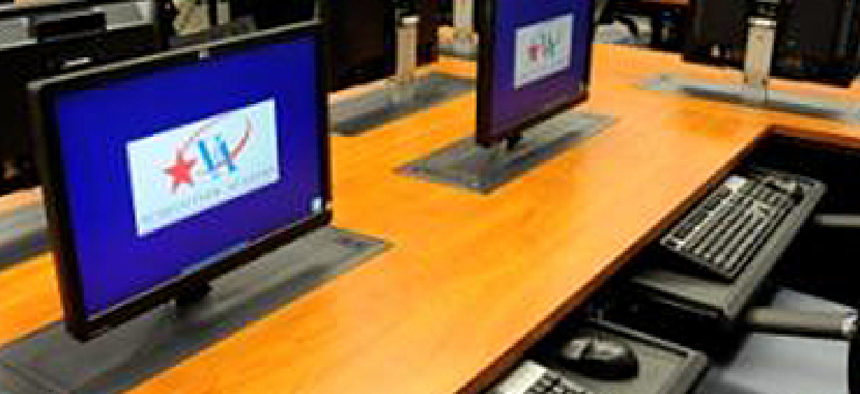New acquisition academy head lays out goals

Melissa Starinsky believes the weakness of federal acquisition training is not in the details of contracting.

A classroom at the Veterans Affairs Acquisition Academy (VA photo)
The government has done well in training its acquisition workforce to meet the contracting certification standards that the Office of Federal Procurement Policy laid out in 2006. Yet employees need to understand organizational leadership even when "playing in the sandbox," said Melissa Starinsky, the new chancellor of the VA Acquisition Academy.
On a governmentwide basis, "we've focused on the skills that are needed to be a great contracting officer," Starinsky said in a recent interview with FCW. However, employees also need to learn "how to run an effective and efficient acquisition organization."
"All across government, that's what we need to do to take the acquisition function to the next level," she added. Therefore, acquisition professionals must be able to think strategically, be innovative and build a well-run operation.
But agencies are caught in a tough spot. The acquisition workforce experienced a major reduction in numbers in the 1990s, particularly at the Defense Department. Officials are attempting to rebuild the workforce, which means they are dealing with an influx of new employees while many experienced senior procurement officials are retiring. Meanwhile, they have few midcareer employees who can help with the transition.
"These parallel bulges constitute a 'bathtub effect' as midcareer personnel are not abundant enough to adequately replace the retirement bulge nor provide for enough on-hands mentorship to the new-hire bulge," according to a report from the House Armed Services Committee's Panel on Business Challenges Within the Defense Industry released in May 2012.

Melissa Starinsky
As a result, "desperate people do desperate things," said Jan Frye, deputy assistant secretary for acquisition and logistics at the Department of Veterans Affairs.
In some instances, agencies are promoting employees without the necessary experience and training. "I think what we're doing, at some level, we're forcing people into leadership positions far too early in their careers, and that's because of the shortages across government," Frye said.
To address the need, the VA Acquisition Academy is pulling leaders back into the classroom for more training and interpersonal skill-building, he said.
"There's clearly a gap out there for mid- and senior-level managers, and we owe them the responsibility to bring them back in," Frye said.
Starinsky said the academy is considering offering more elective courses in administrative management.
She began her career as as an intern in the Navy in 1989 and is now a member of the Senior Executive Service. Along the way, she has served as deputy director of the Office of Acquisition and Grants Management at the Centers for Medicare and Medicaid Services and was vice chancellor of the VA academy’s Acquisition Internship School, which seeks to strengthen VA’s acquisition workforce.
Throughout her career, Starinsky said she has benefited from having well-trained managers and that today’s senior and middle managers have a valuable role to play in developing the newest members of the acquisition workforce.
She said one way managers could invest in younger employees is by shifting the workload. Most middle managers are also contracting officers, and that full workload leaves little time to mentor new employees. She said the government must find a way to lighten their load so they can invest more time in people.
"That was the model I grew up in," she said. "I had managers and leaders who really spent time with me to mentor me."
NEXT STORY: VA paperless benefits rollout gains speed





